 |
 |
 |
| |
LOW RATES OF HEPATITIS B VACCINATION AMONG PEOPLE WITH HIV
|
| |
| |
CROI 2022 Feb 11-16
Mamta K Jain1,2, Karen J. Vigil3 , Onkar Kshirsagar4,Laura Hansen1, Barbara S. Taylor5 , Mae Thamer4
1 University Of Texas Southwestern Medical Center, Dallas, Texas, USA, 2 Parkland Health and Hospital System, Dallas, Texas, USA, 3University of Texas Health Science Center, Houston, Texas, USA, 4Medical Technology & Practice Patterns Institute, Bethesda, Maryland, USA, 5University of Texas Health Science Center, San Antonio, Texas, USA
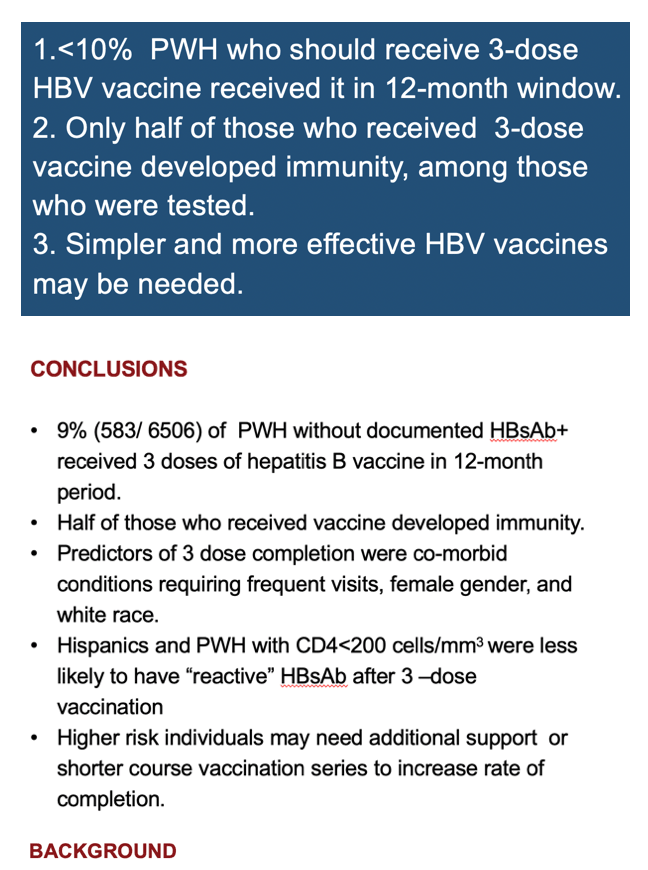
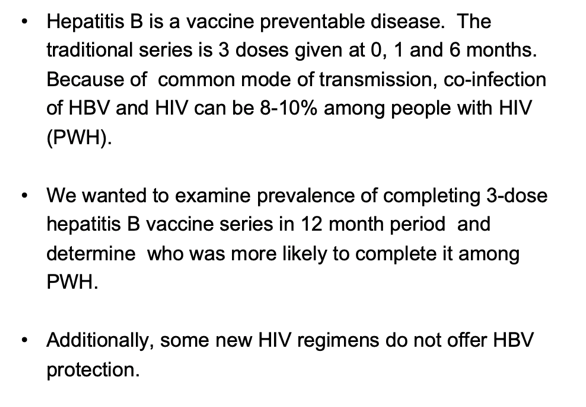
Background:
Hepatitis B is a vaccine-preventable disease. The traditional vaccine series is dosed at 0, 1 and 6 months. We examined 3-dose vaccine regimen completed in a cohort of people with HIV (PWH), since hepatitis B impacts 8-10% of PWH due to the common mode of transmission.
Methods:
This is a multi-site retrospective study. Inclusion criteria were PWH with 1 to 9 years of follow-up from 1/1/11 to 12/31/18. Patients were excluded if no HIV viral load or CD4 count were available, hepatitis B surface antigen was positive or hepatitis B surface antibody (HBsAb) was "reactive." We examined the outcome after receipt of 3 vaccines over a 12-month period. We also examined the outcome of achieving a reactive HBsAb after completion of the series. Multivariate analysis examined co-variates for the outcomes of receiving 3 doses and of achieving protective immunity.
Results:
Out of 32,417 PWH, 6,506 were included (69.7% male, 55.7% Black, 55.6% indigent), 40.9% had CD4 <200 cells/μL, 10.3% HIV viral load <50 copies/mL at study entry. Overall, 583 (9%) received 3 doses of vaccine over a 12-month period. Women, non-English speakers, those with hypertension, non-HCC cancers, NAFLD, opportunistic infections, and those with CD4 > 200 cells/μL at baseline were more likely to be fully vaccinated (Table 1). Those less likely to be vaccinated were those age 45-54 years vs. <34-year-old, Black vs. non-Hispanic White, Medicare vs. commercial insurance, those not on HBV specific medication vs. HBV specific ART, and those with HCV. Of those who received the 3 doses of hepatitis B vaccine and had HepBsAb measured ( 48%; 281/583), 52% were HBsAb-reactive after 3rd dose. HBsAb-reactive after vaccination was associated with CD4 >200 cells/μL. Hispanic white and those with opportunistic infections were less likely to be immune after vaccination.
Conclusion:
This study demonstrates that less than 10% of PWH without documented HBsAb+ received 3 doses of hepatitis B vaccine in 12-month time frame, and half of those vaccinated developed protective immunity. Those more likely to complete the series had co-morbidities requiring frequent visits. As expected, those with higher CD4 counts achieved reactive HBsAb, but it is unclear why Hispanics were less likely to achieve reactive HBsAb after vaccination. Higher risk individuals may need additional support or shorter course vaccination series to increase rate of completion.
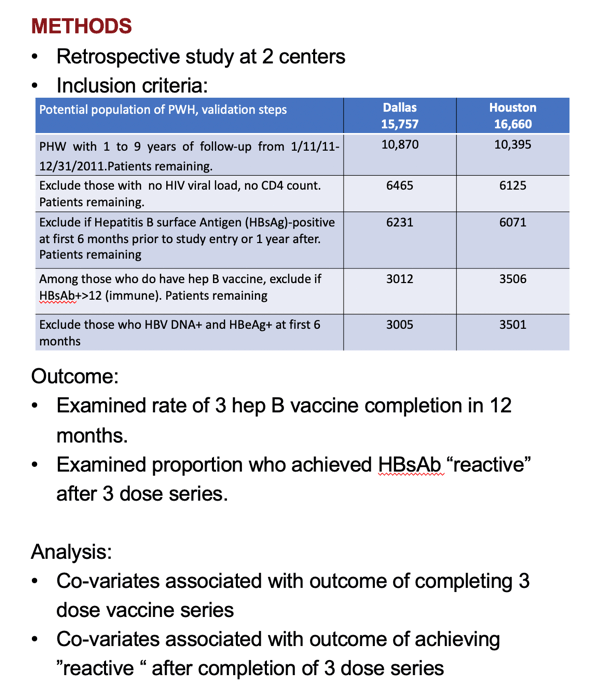
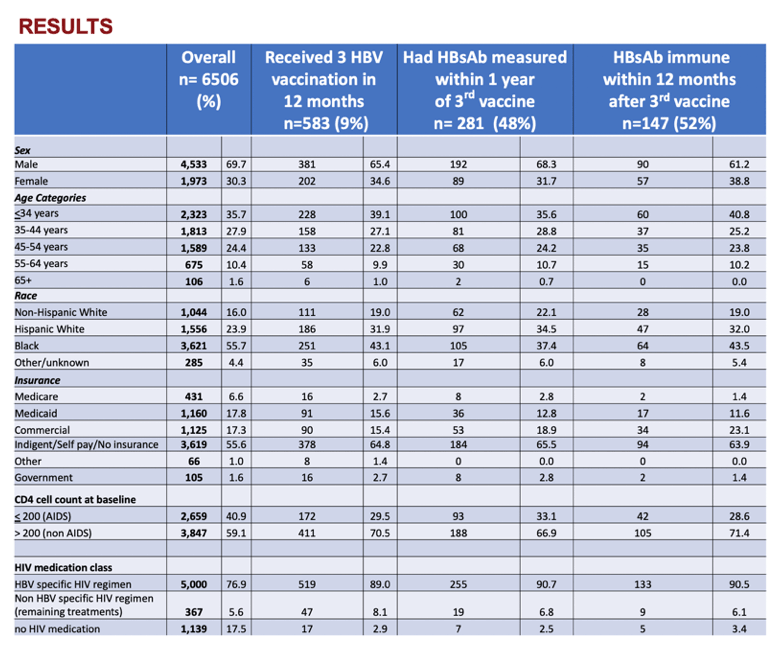
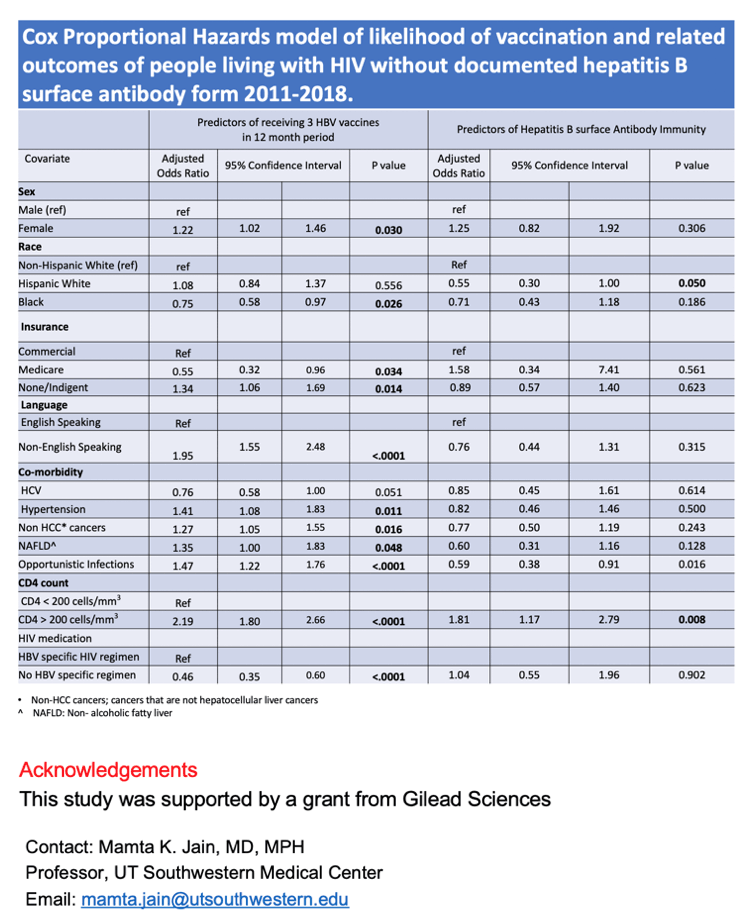
|
| |
|
 |
 |
|
|